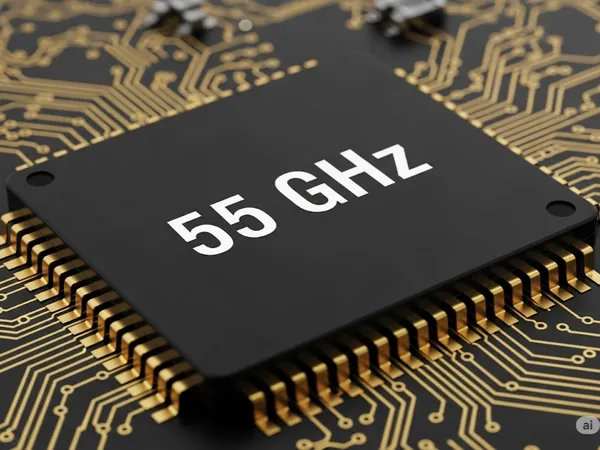
Accidental Discovery at MIT: A Game-Changer for Smartphone and Computer Performance!
2025-08-31
Author: Daniel
MIT's Happy Accident Could Revolutionize Tech
In a surprising twist of fate, researchers at MIT on a quest to enhance nuclear reactor safety have stumbled upon a groundbreaking technique that promises to boost the performance of computer chips. Their initial experiments aimed to investigate how materials react in the extreme environment of a nuclear reactor, but they uncovered something far more exciting.
A Breakthrough with Powerful X-Rays
The findings, published in the prestigious journal Scripta Materialia, involved the use of a powerful X-ray beam that mimicked the severe radiation found within a nuclear reactor. While examining nickel—a staple in advanced nuclear reactors—the researchers made an unexpected discovery: they could manipulate the strain within the material’s crystal structure with astonishing precision.
Transforming Microelectronics with Strain Engineering
This accidental breakthrough has monumental implications for the semiconductor industry, where strain engineering is a cornerstone technique. By integrating this new methodology, engineers can now employ X-rays to optimize strain during the manufacturing of microelectronics—a game changer for boosting optical and electrical performance.
Dual Success: Real-Time Monitoring of Material Failure
Remarkably, the research also succeeded in its primary objective, unveiling a method for real-time 3D monitoring of material failure in a simulated nuclear reactor setting. Prolonged exposure to X-rays was shown to relax internal strain, allowing for precise 3D reconstructions of the crystal under stress—an achievement nobody had accomplished before, according to senior author Ericmoore Jossou.
Implications for Future Technology
This unexpected combination of findings could herald a new era for electronic devices, allowing for faster, more reliable technology to emerge from this serendipitous discovery. As smartphones and computers continue to evolve, MIT's breakthrough could very well define the next generation of high-performance computing.
Stay Tuned!
As the world of technology rapidly advances, keep an eye on MIT's research for future developments that could reshape the landscape of electronics as we know it!



 Brasil (PT)
Brasil (PT)
 Canada (EN)
Canada (EN)
 Chile (ES)
Chile (ES)
 Česko (CS)
Česko (CS)
 대한민국 (KO)
대한민국 (KO)
 España (ES)
España (ES)
 France (FR)
France (FR)
 Hong Kong (EN)
Hong Kong (EN)
 Italia (IT)
Italia (IT)
 日本 (JA)
日本 (JA)
 Magyarország (HU)
Magyarország (HU)
 Norge (NO)
Norge (NO)
 Polska (PL)
Polska (PL)
 Schweiz (DE)
Schweiz (DE)
 Singapore (EN)
Singapore (EN)
 Sverige (SV)
Sverige (SV)
 Suomi (FI)
Suomi (FI)
 Türkiye (TR)
Türkiye (TR)
 الإمارات العربية المتحدة (AR)
الإمارات العربية المتحدة (AR)